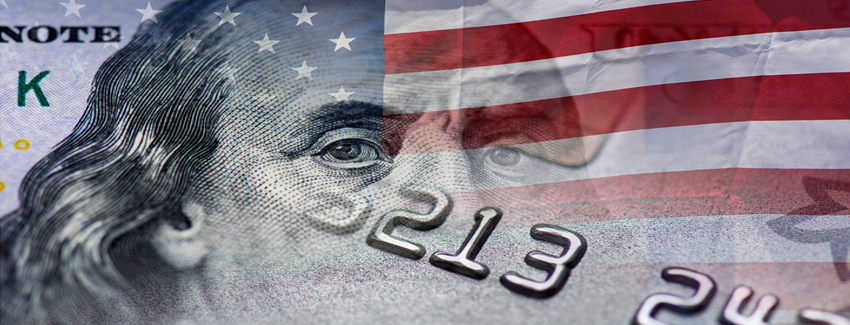
PARIS – First, the news.
Cryptocurrencies took a beating after Jamie Dimon – the CEO of JPMorgan Chase, a bank that makes billions from today’s fake-money system – called bitcoin a “fraud.”
Bitcoin – the leading cryptocurrency by market value – is down to $3,143 at this writing.
That’s about 36% lower than its all-time high of $4,911, set on September 1 of this year.
President Trump put another knife into Republicans. According to press reports, he agreed to not only give the “Dreamers” refuge, but also to forget about building “The Wall.”
And the U.S. national debt rose over $20 trillion… thanks to last week’s debt ceiling suspension.
Meanwhile…
Apparent “Prosperity”
Our hypothesis is simple: Real money represents real resources.
Phony money – such as credit created out of nothing by the Fed – is counterfeit; there’s nothing behind it.
If you could create real prosperity by flooding the economy with fake money, Zimbabwe would be the richest country on Earth.
It printed gazillions of Zim dollars to stimulate the economy. Then, when there was no one left with any real money… and nothing left to buy with it anyway… the Zimbabwe feds gave up. They brought in U.S. dollars.
When criticized by foreign economists for his role in this disaster, Gideon Gono, the governor of Zimbabwe’s central bank, had a good answer: “Hey, I didn’t do anything you’re not doing.”
He was right. But what Gono did quick, Janet Yellen, Mario Draghi, et al. are now doing in slo-mo.
Any boom – fast or slow, big or little – financed with fake money must eventually turn into a bust. And every dollar of apparent “prosperity” – wrought by the counterfeit money – must go back whence it came.
Classical economists in the 18th and 19th centuries showed why this was so. The demonstration tends to be longer and more tedious than we can stomach here. Instead, we resort to an intuitive proof.
You pretend to be rich; a Russian model marries you. Then she discovers you are penniless; how is that likely to work out?
2008 Redux
This year, total household debt in the U.S. rose to $12.7 trillion – surpassing its 2008 peak.
That’s the amount of stuff consumed, credit cards maxed out, and vacations enjoyed – on credit above and beyond savings.
You may say, “Well, so what? We’re able to carry the debt. We’re all right so far.”
Our grandfather, who lived through the Great Depression, used to joke about it. He said he was on the 11th floor of the First National Bank building in Baltimore, in 1931, when he saw someone through the window who had just jumped off the roof.
“I’m all right so far,” yelled the man.
And yes… we are all right so far. We can carry the debt.
But look at what happens: Today’s wages and asset prices – which we depend on to shoulder that debt load – themselves depend on increasing debt.
That is, as we saw on Friday the typical consumer has to keep borrowing. If he stops, sales will go down… profits will go down… wages will go down…
…and it will be impossible to pay the interest on the current level of debt.
In other words, there is no such thing as a stable debt-fueled expansion. Instead, it is boom… and then bust. There’s no standing still. You are either taking on more debt to keep the debt bubble inflated…
…or the whole shebang is losing air.
And what makes today’s financial world so exciting is that there is so much air to lose – $13 trillion in America alone.
So… what’s that hissing noise?
Doom Index Update
We turn to the Bonner & Partners research department, led by Joe Withrow, for an update:
The Doom Index is still at a reading of 7 – our “extreme warning” level – as we enter the final month of the third quarter.
Credit growth is just above negative… but less than 1%. Corporate bond downgrades continue to outweigh upgrades. Stock valuations press ever higher. Margin debt [money stock market investors borrow from their brokers using shares in their accounts as collateral] continues to grow.
But the ISM Manufacturing Index – a key gauge of the health of the manufacturing sector – continues to hold strong. And junk bonds refuse to crack.
But remember, our backtests are based on quarterly data. Any major swings this month could push the Doom Index to a reading of 8 – signaling a return of the old and tattered Crash Alert flag. Until then, we remain extremely cautious…
We used to run our Crash Alert flag up the pole on instinct alone. After so many years of watching the stock market, we thought we’d developed a sixth sense for when it was getting ready to collapse.
And sometimes we were right! At the end of the 1990s, for example. And again in 2008.
But we were wrong sometimes, too.
Since 2009, we’ve raised the flag several times… and still no crash!
The poor black-and-blue standard was tattered by the wind… bleached by the sun… and drenched by the rain.
Finally, we had pity on it… blew taps… and hauled it down, wrapping it with white gloves and putting it away until the day it comes out again.
And now, our Doom Index is just a fraction of a point away…
We’re ready, Joe. Tell us when to raise the flag.
Regards,
![]()
Bill
Category: Economics

